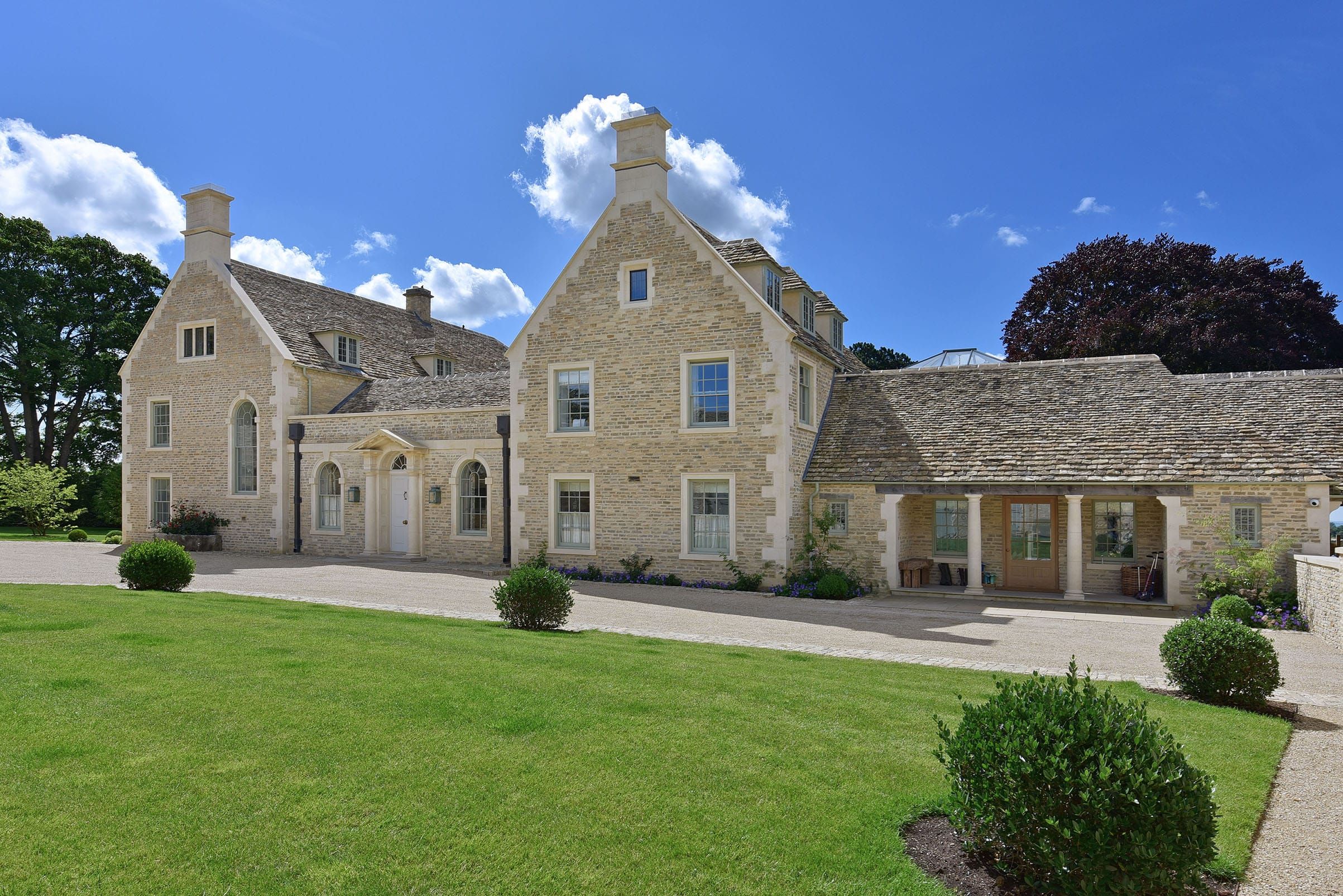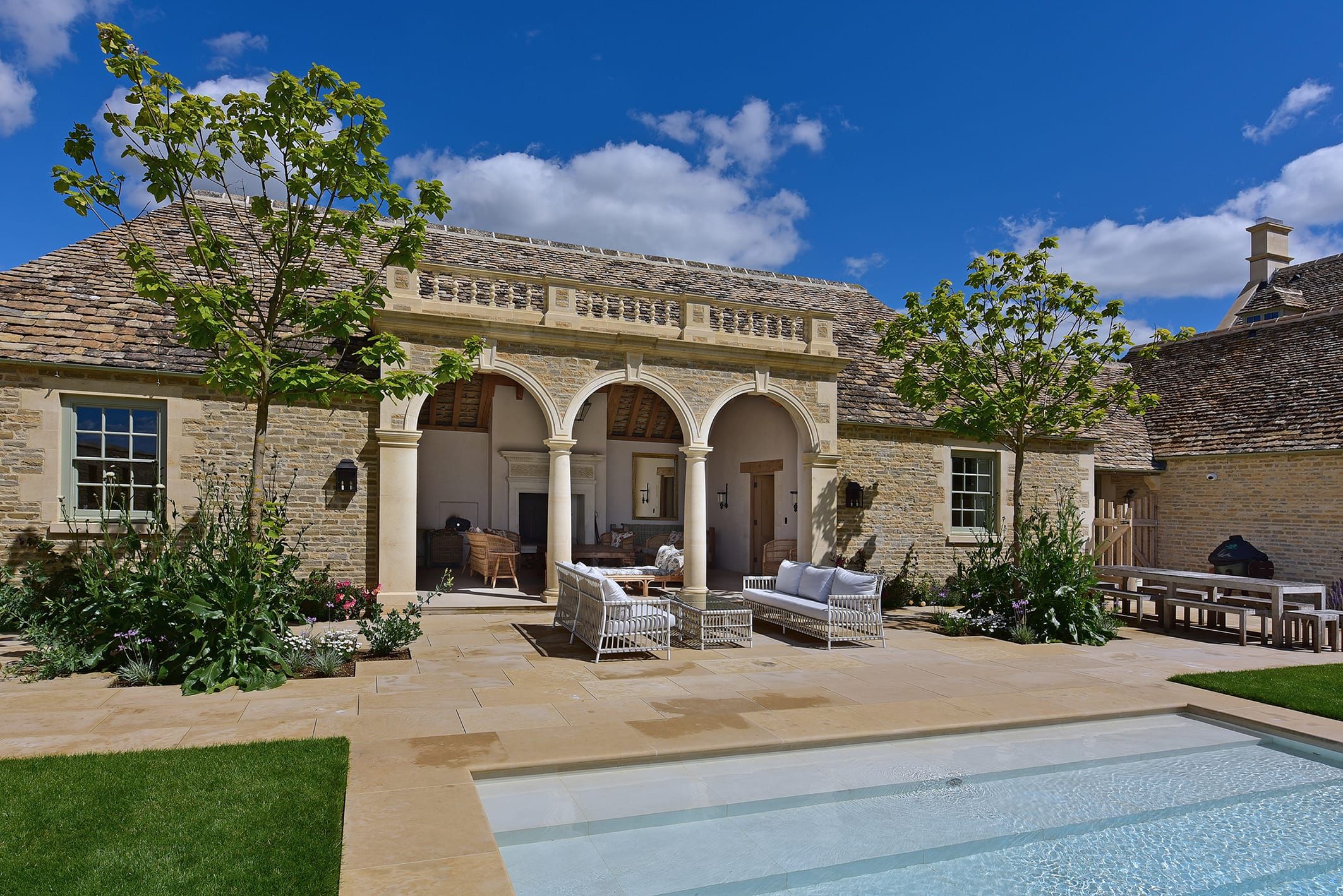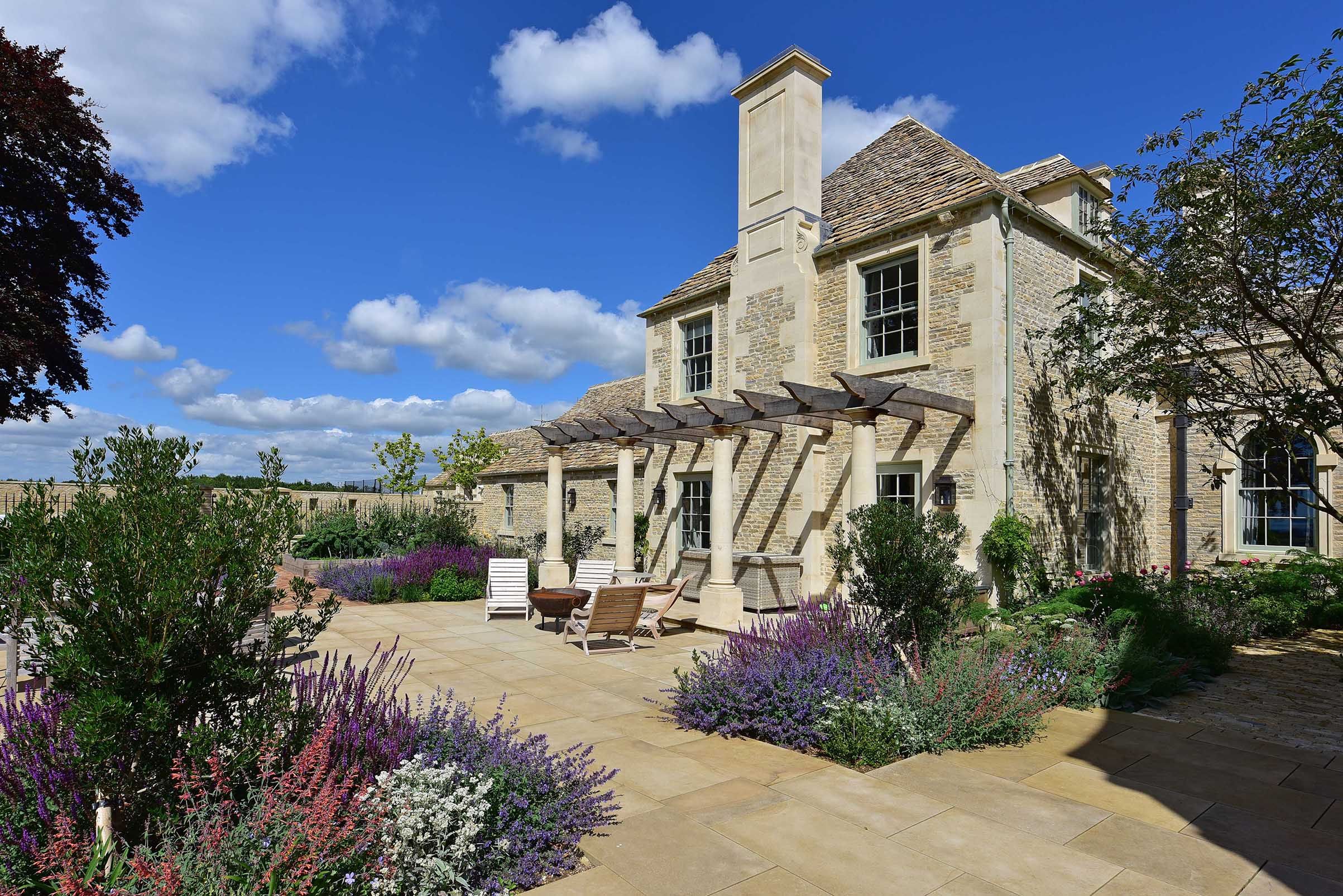
in partnership with
Join us as at The Natural Stone Show 2023 as we reveal the Industry Choice Award as voted for by the stone industry.
Chosen from the individual award-winners from each category of The Stone Federation’s recent Natural Stone Awards, all attendees of the show are invited to cast their votes on their favourite project.
Taking place on Tuesday 6 June as part of Architects' Day, the session runs from 12 - 2pm and will explore a selection of the award-winning projects with insights from the architects and the principal stone contractors. The session will conclude with the presentation to the overall winner.
This will be followed by invitation-only drinks and networking lunch from 1 - 2pm.
View the projects below

To vote please complete the form at the bottom of the page. If you haven't registered for the show yet you can also sign up for your free visitor ticket here.
Voting has now closed.
The categories:
– New Build Modern Style Stone Cladding
– New Build Traditional Style Stonemasonry
– Repair & Restoration Commercial
– Repair & Restoration Ecclesiastical
– Interiors Commercial & Residential
Client
Qatari Diar Europe
Architect
Eric Parry Architects
Main Contractor
Multiplex
Principal Stone Contractor
Szerelmey
Stone Supplier (1 & 2)
LSI Stone
Stone Supplier (3)
Grupimar
Stone Used (1)
Gascoigne Blue
Stone Used (2)
Cabeca Veada
Stone Used (3)
Gris Cadalso
Situated in Belgravia, Chelsea Barracks is a world-class development comprising a rare collection of apartments, penthouses and townhouses, set around seven garden squares. Phase IV comprised a complicated and extensive package of externals over three buildings (6, 7 and 8) arranged around a private courtyard. Each building is six storeys with a two-storey penthouse set back at the upper levels; they each feature complicated parapets with dentril detailing.
Building 6 comprises primarily stone cladding in Portuguese Cabeca Veada (6,100 stone units). This building and building 8 feature lintels that are over 3m in length, produced in single pieces and requiring substantial fixings, and both have dense limestone plinths in Gascoigne Blue.
Building 7 is the most complex of the three and involves a doubleheight load-bearing colonnade comprising twenty-one columns. The colonnade columns are two storeys high and made up of five courses of stone. The bottom stone on the column is hollow and is filled with in-situ concrete to provide a positive connection to the foundation. The four courses of stone above this in each column are solid stone which are pinned together. The columns support the terrace above. Further works include handset Cabeca Veada cladding, installation of a large stone frieze inscribed with a poem, precast spandrels, lintels and parapets and a Gris Cadalso Granite plinth. Building 8 comprises stone cladding. A total of over 1130 cubic metres of stone was used across the three buildings.
Client
The Friends of Lancing Chapel
Architect
St Ann’s Gate Architects
Main & Principal Stone Contractor
Chichester Stoneworks
Stone Supplier (1)
Doulting Stone Quarry
Stone Supplier (2)
Portland Stone Firms
Stone Used (1)
Doulting Stone
Stone Used (2)
Portland Broadcroft
Originally designed by R.H.Carpenter and William Slater, Lancing Chapel is one of the tallest interior-vaulted churches in the United Kingdom and is the chapel of Lancing College in West Sussex. Since the foundation stone was laid in 1868, there have been several construction phases followed by fallow periods as funds were raised. The new west end of Lancing Chapel is the last of the construction phases and involved the addition of an elegant arcade porch and extended buttresses.
Doulting Limestone was selected to match the adjacent stonework used in the 1970s work. Digital photogrammetric and hand surveys were made to ensure accurate dimensions of the existing stonework were used in the detailing of the interfaces and the sections and mouldings used were as the original.
On-site, reinforcement and extensions to the existing foundations included the installation of RC ground beams and slab, enabling them to take the weight of the new porch and buttress extensions.
A sympathetic lime mortar was used for the jointing and once all the stone was in place the elevations were carefully finished and cleaned down.



Client
Private Client
Architect
Fleming Architects
Main Contractor
JND Building Services
Principal Stone Contractor & Stone Supplier (1)
Cotswold Natural Stone
Stone Supplier (2)
Lovell Stone Group
Stone Used (1)
Grange Hill
Stone Used (2)
Hartham Park Bath Stone
This traditional country property sits in the Oxfordshire countryside and has seen the extension of its farmhouse and two small farm buildings in the same style as the original building. Purchased by the owners in 2007, the farm required major renovation and now serves as an idyllic Cotswolds bed & breakfast.
The property used Grange Hill Cream and Grey mixed building stone, with Hartham Park Bath Stone masonry dressings, including window and door surrounds, arched entrance door surrounds with a canopy above and pilasters, chimney stacks, quoins, balustrades, and columns. The pool house has natural stone columns, archways with keystones, and balustrades above.
Client
Cameron House
Conservation Architect
Simpson & Brown
Architect
3D Reid
Main Contractor
ISG Construction Scotland
Principal Stone Contractor
Stirling Stone
Structural Engineers
Etive Consultant Engineers
Property Consultants
Amicus Property Consultants
Stone Supplier
Hutton Stone
Stone Used
Darney Sandstone
Cameron House was devastated by fire in December 2017 leaving the historic B-listed early 19th-century baronial mansion just a shell of a building.
Enabling works commenced in 2019 to allow building works to begin for the full reinstatement of the structure and bring it back into use as an award-winning luxury hotel. Once stabilised, the team sorted and cleaned those elements of masonry which could be utilised in the reconstruction. It was apparent that there would be a requirement for substantial replacement materials to supplement that which had been reclaimed and suitable sandstones were researched and sourced for approval.
Extensive consolidation of the internal faces of the retained walls was required including the rebuilding of large portions of the wall heads utilising reclaimed material where possible.
Depending upon location, the new ashlar cladding varies in thickness of 100mm and 150mm, whilst the moulded and capping work varies between 350mm and 750mm in depth. Overall, the restoration work has incorporated a wide variety of carefully matched details.
The new work included new Darney Sandstone cladding tooled to match the existing walling, replacement of the central tower together with reinstatement of the adjacent gable and chimneys utilising a mixture of reclaimed and new tooled Darney Sandstone.
Client
Dean of Carlisle Cathedral
Architect
Feilden Fowles
Main Contractor
Cubby Construction
Principal Stone Contractor
Askins and Little
Structural Engineer
Structure Workshop
Stone Supplier
Cumbrian Stone
Stone Quarry
Marshalls Block Stone
Stone Used
St. Bees Sandstone
Locharbriggs Sandstone
Originally built in 1122 in a Norman architectural style, the cathedral is the seat of the Anglican Bishop of Carlisle, Cumbria. This latest transformation of the Grade I-Listed medieval Fratry at Carlisle Cathedral is the most significant physical intervention on the cathedral site for more than 150 years. The Fratry was built between 1465 and 1490 as the priory refectory, and houses one of the finest cathedral library collections of books in the country.
Following extensive consultation, the external 19th century porch was removed with the incorporated 15th century doorway being carefully dismantled and successfully reinstated in its original outwardlooking orientation, aligning with the new pavilion. To avoid damage, considerable care and attention were exercised in dismantling and rebuilding the moulded masonry jambs and arch stones.
In-fill ashlar was accurately dimensioned to bond with the original course heights of the surrounding build, salvaging and reusing some of the 19th century Porch sandstone blocks. Within budgetary limits, the sensitively approached project involved applied peelable latex cleaning, selective indenting, and lime mortar repointing of the original internal masonry, in addition to repointing the external north wall face.
The undercroft refurbishment involved the creation of more sensitively designed and installed DDA-compliant access and facilities, whilst paying due regard and attention to the historic fabric.
Client
Lenaboy
Architect
Caulfield Wright Architects
Main Contractor
Whelan & O’Keeffe
Principal Stone Contractor
Carvero Stonemasonry
Other Stone Specialist
Stenstone
Architectural Joinery
Philippe Hetier Bespoke Furniture
Architectural Metalwork
Finnegan Steel Fabrication
Structural Engineer
Price & Myers
Stone Supplier
Telmo Duarte
Stone Used
Codacal – Portuguese Limestone
This new bespoke staircase was constructed within a contemporary family home, designed and built to exploit spectacular views over the Irish Sea and Lambay Island.
On entering the hallway, the design and form of the Portuguese Limestone stair, set within its segmental re-entrant, is emphasised and enhanced by vertical light flooding in from its overhead skylight.
The majority of the staircase is installed in the traditional cantilevered method. Only the bottom three steps have been pinned together on site and post-tensioned, before being lifted as one piece in place. Every stone has been hand-carved, with no use of CNC. At the end, the entire staircase has been carefully finished and repolished, to achieve a fine continuous finish.
From the landing’s uppermost tread, the stone detailing continues as a neatly disciplined Codacal skirt delineating the stairwell’s profile by a continuous ribbon of stone. Care has been exercised to ensure a levelled transition with adjacent timber flooring. A similar degree of care has been exercised in the design and positioning of the contrasting black metal balusters supporting the continuous tactile oak handrail. Here, the uprights have been inserted into the masonry treads and upper-level skirt with a uniformity in spacing that fully accommodates all the subtle directional changes which, in the masonry landing and upper level, has also been exceptionally well detailed.
Client
Lendlease
Landscape Architect
Gillespies
Main & Principal Stone Contractor
Careys
Water Feature Designer
Mel Chantrey and The Fountain Workshop
Softworks Contractor
Willerby Landscapes
Lighting Designer
Spiers Major
Stone Supplier
Hardscape
Stone Used
Prima Porphyry
Located in Elephant and Castle, this 420m² natural playscape is a central part of a wider £2.5bn revitalisation of the area which is looking to create a benchmark for city living.
The park is a celebration of nature and a tribute to Elephant and Castle’s diverse population and existing ecology, offering everyone living in or visiting the area unforgettable social and recreational experiences, and an opportunity to slow down and connect with nature. Elephant Springs was designed to feel like a natural part of the landscape, a rocky, watery landscape with multiple mounds, ravines and channels inspired by the natural world.
The project was constructed from 300 tonnes of Prima Porphyry stone layered to mimic 2.3m high rocky outcrops and completed with water streams, pumps, activated jets and slides.
Porphyry was chosen to create the topography of Elephant Springs because it naturally breaks away in large slabs in the quarry. It is also incredibly hard-wearing and has good slip resistance when wet, and its texture and colouration establish a raw, rugged aesthetic like a rocky outcrop.
The design development process was undertaken through hand sketches, specification requirements, CAD drawings and a ‘built to scale’ plasticine model. Stones were selected and assembled dry in a yard at the quarry to match the forms of the plasticine model and test the arrangement at full scale.
Client
The Duke of Bedford
Architect
Nick Cox Architects
Main & Principal Stone Contractor
Boden and Ward Stonemasons
Contract Administrator & Project Manager
Fanshawe
Structural Engineer
Pryce & Myers
Quantity Surveyor
ISQS
Stone Supplier
Albion Stone
Stone Used
Portland Basebed
Woburn Abbey is a Grade I Listed house and one of the ten Treasure Houses of England. It has been home to the Dukes of Bedford for nearly 400 years and today is occupied by the 15th Duke of Bedford.
The existing screen walls were built mainly of Totternhoe Clunch with Portland Stone plinths and had had extensive repair works carried out over the years.
Careful consideration had to be given to the recording and setting out of the walls to ensure that they went back exactly to their original orientation and plan. To enable this, a topographical survey was undertaken. Due to the sweep of the walls, none of the stones were square, with all perp joints being vertical and bed joints running to a fall.
The north and south screen walls were dismantled by hand and the reusable Portland stone elements cleaned and numbered. All dismantled masonry not suitable for re-use and any brick infill was crushed on site and reused for hardcore elsewhere on the estate.
Once the walls were dismantled, the existing footings were removed and replaced with 166 piles 305mm dia. x 11m deep, 42 pile caps, and connecting ground beams.
Throughout the entirety of the project, in excess of 700 tonnes of Portland Basebed were worked, a stone that was selected for its durability and existing use in the screen walls.
Client
Geoffery & Janet Hughes
Designer & Sculptor
Charles Gurrey
Other Stone Specialists
Mather and Ellis
Matthias Garn
Stone Supplier
Ashlar Stone Products
Stone Used
Branshaw Sandstone
This public memorial, sited at Wainsgate consists of a large turned stone urn with a bronze flambeau at the top and was commissioned by the clients in memory of their daughter by way of The Lettering Arts Trust.
The urn and the four-sided plinth it sits upon were created using locally quarried Branshaw Sandstone with one side of the urn bearing an inscription from T.S. Elliott’s poem, ‘Ash Wednesday’. The text runs around and down the urn in the manner of a classical shrouded urn.
The chosen stone was selected as its close-grained geology lends it well to carving and its locality to the site.
A concrete foundation was laid on this elevated and sloping site, and the plinth was built upon that. The flambeau, urn and pedestal were all tied together with a stainless-steel rod recessed and fixed into the plinth. The total height of the work is 2.1 metres, and it weighs approximately 1.2 tonnes.
The memorial seeks to be a contemporary work whilst also acknowledging the range of monuments in the Victorian section of the chapel cemetery.
Join thousands of industry professionals and hundreds of exhibitors at the UK's natural stone and hard surfaces industry event.
7 – 9 May 2025 | London ExCeL | co-located with UK Construction Week